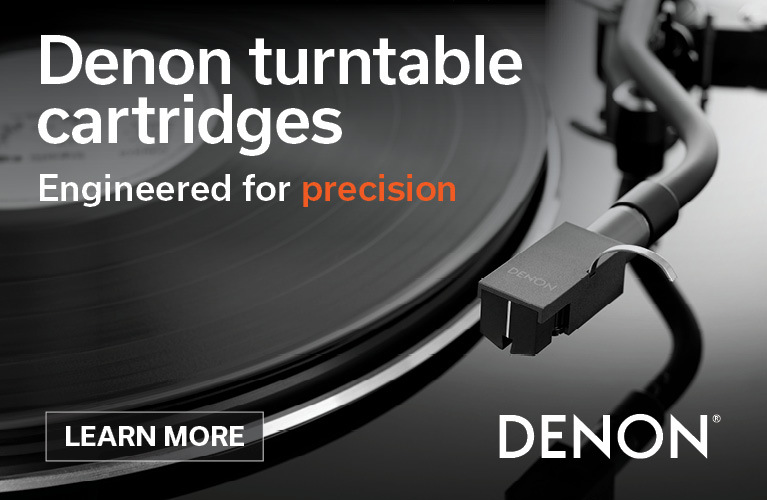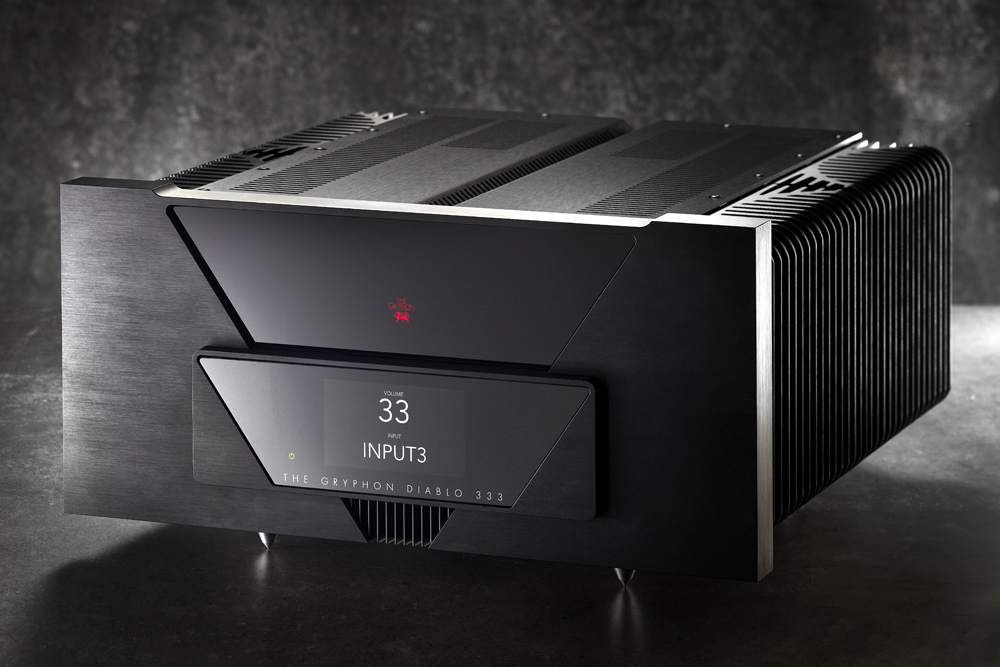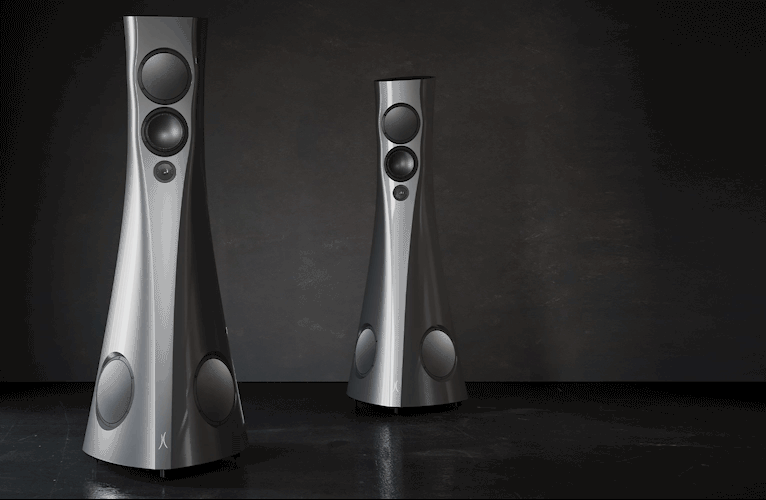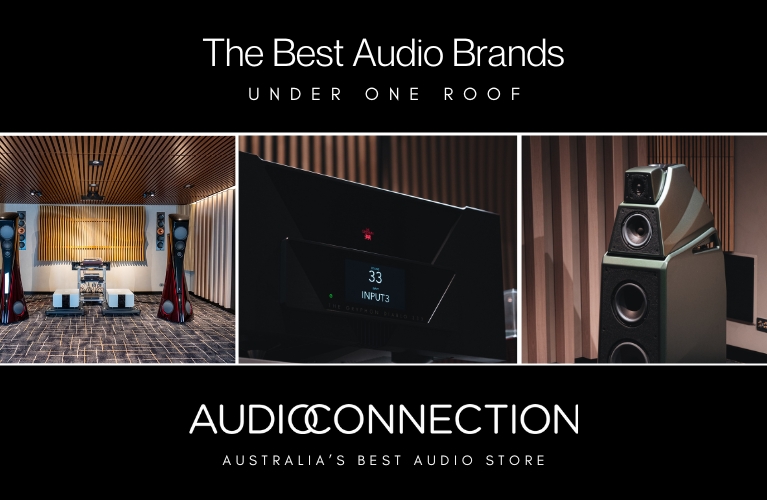Large amplifiers… yeah, digital amplification notwithstanding, high-end amps tend to be bulky. Think Oscar Wilde’s “Moderation is a fatal thing. Nothing succeeds like excess” – that phrase sums up most top-tier high-end integrated amplifiers. As big and bold integrated amplifiers go, there are only a few units mixing it up with Gryphon Audio Designs’ monumental Diablo 333. It’s the Danish company’s newest, and by gosh, meanest-looking integrated amplifier. Yet paradoxically, it combines brutal brawn build with industrial design elegance. It’s a Helluva statement piece… now, beyond its magnetically charismatic aura, how does the Diablo 333 sound?
The Beast and the Dancer
Yeah, I did use the word “charismatic” in my intro. “How does that apply to an inanimate object, an amplifier no less?”. In my view, this is an aesthetic captivation that many, if not all, Gryphon Audio Designs’ components have embodied throughout the company’s near-40-year history. The Blackhole aesthetics almost have a… gravity, sucking your visual attention right into it. Yet, now retired company founder Flemming Rasmussen’s artistic talent has always endowed Gryphon Audio Designs’ striking industrial language with an individuality which combines art with functionality and purpose. The company’s Chief Engineer Tom Møller leads a strong team, and he provides the smart guts to the impressive exoskeleton. Here, in yet another example of creative expression, Rasmussen’s and Møller’s Diablo 333 becomes yet another high-end representation of extraordinary industrial art meeting technical prowess.
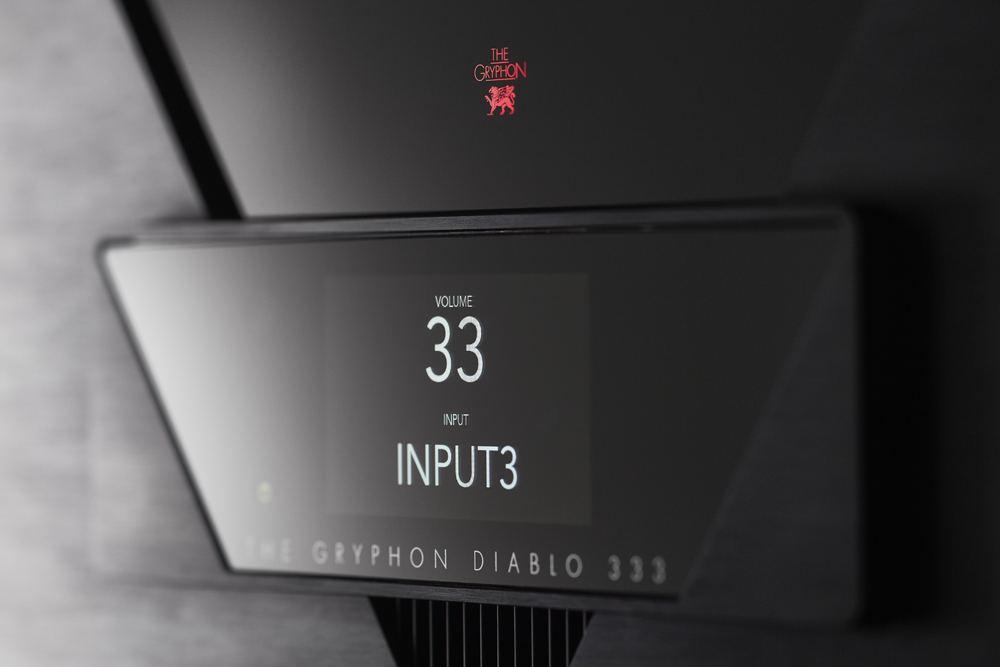
Stunning looks aside, the Diablo 333 is a powerhouse of an integrated amplifier, with, as mentioned above, its technical foundations being a result of Gryphon Audio Designs’ engineering team led by Tom Møller. The 333 (for short) is massively sized and equally massively built, both in and out. It’s solidly assembled, featuring heavy gauge metalwork highlighted by the large heatsinking system along the unit’s chassis sides. The heatsinks themselves are quite distinctive and nicely rounded, a design aspect which will also prevent slivers of flesh from being accidentally sliced.
Fully manufactured in Denmark (read my Gryphon Audio factory tour Feature here), the Diablo 333 exudes quality from every metal pore. The new design language sees more use of heavy metal and less use of the polished black acrylic, which was somewhat of a trademark aspect, and is now a visual accent. So, the 333’s fascia is chiselled from a massive aluminium plate which is contrasted with a triangular acrylic panel where a backlit ‘The Gryphon’ graphic blinks upon turn on. Below that, in a design feature reminiscent of my own Antileon EVO and the newer Apex flagship power amplifier, a metal and acrylic protrusion now houses a nice 4.3 inch TFT capacitive dimmable touchscreen display which is damage-protected with 4 mm thick hardened glass. The touchscreen is responsive and provides access to a whole stream of setup options and amplifier configurations. Nice.
Of course, the Diablo 333 is a successor to the Diablo 300, a triumphant integrated amplifier which garnered high acclaim from around the world. But now, we’re talking next level. Gryphon (for short) claims the 333 is a total redesign which improves on just about every aspect of its predecessor, plus, there are trickle down technologies derived from both the über Apex power amplifier and Commander preamplifier flagships. For starters, with a 10% boost, it’s a more powerful beast, boasting 333 watts per channel into 8 ohms. It then doubles down to 666 watts (how devilish) per channel into 4 ohms and on to 1100 watts per channel into 2 ohms.
As per Gryphon’s preferred strategy, the 333 is a wide bandwidth design spanning from 0.1 Hz to 350 kHz at -3dB in order to maintain good phase characteristics, usually associated with precise spatial/imaging properties. The input impedance Gryphon quotes is 50 kohms for the balanced inputs and 30 kohms for the unbalanced input (20 Hz to 20 kHz). The 333’s output impedance is a low 0.015 ohms.
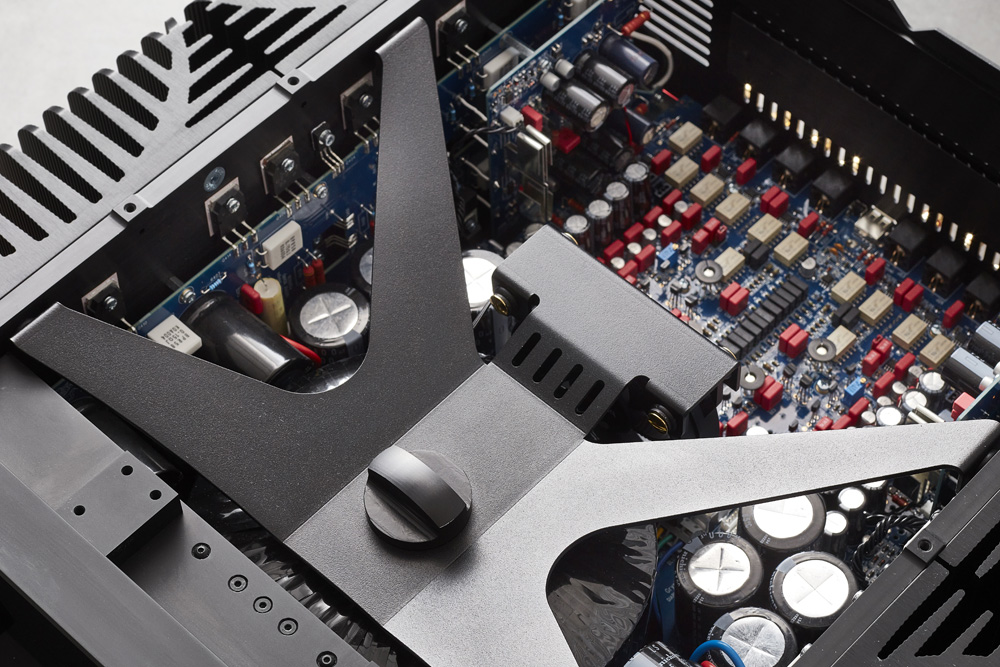
In line with Gryphon’s philosophy of applying massive power supplies in its electronics – be it amplifiers, preamplifiers and even CD players – the 333 features a 136,000 micro-Farad capacitor bank and a large Holmgren dual-mono toroidal transformer. Output devices are listed as 10 per channel and are the same transistor types employed in Apex. The thing weighs over 50 kilos so, yeah, serious. Oh, and be mindful about your amp rack/platform surface – the 333 comes with a sharp bespoke spiking system.
On the rear of 333’s panel you’ll find a wide selection of socketry to cater to any system configuration. I’ll kick-off with a special mention: those custom speaker binding posts are freakin’ awesome. Not only are they superbly machined and built, but they super-solid contact with bananas plugs, spade lugs of all sizes, and bare wire (should you go that way) while looking like the supermodels of the connector world (wait, did I just make that analogy?).
On the input side, there are two XLR balanced, and one RCA unbalanced (can be configured as home cinema pass-through), while there’s also a ‘Tape in’ and ‘Tape Out’ RCA loop. Left/Right subwoofer outputs via RCAs allow for low-frequency system expansion. Below the delightful speaker binding posts is a 15A IEC socket and, next to that, a ‘Ground’ post. Finally, there is a USB port for programming, a 3.5 mm jack for cabled remote, and in/out 12V 3.5 mm mini-jack sockets provide power switching with compatible electronics.
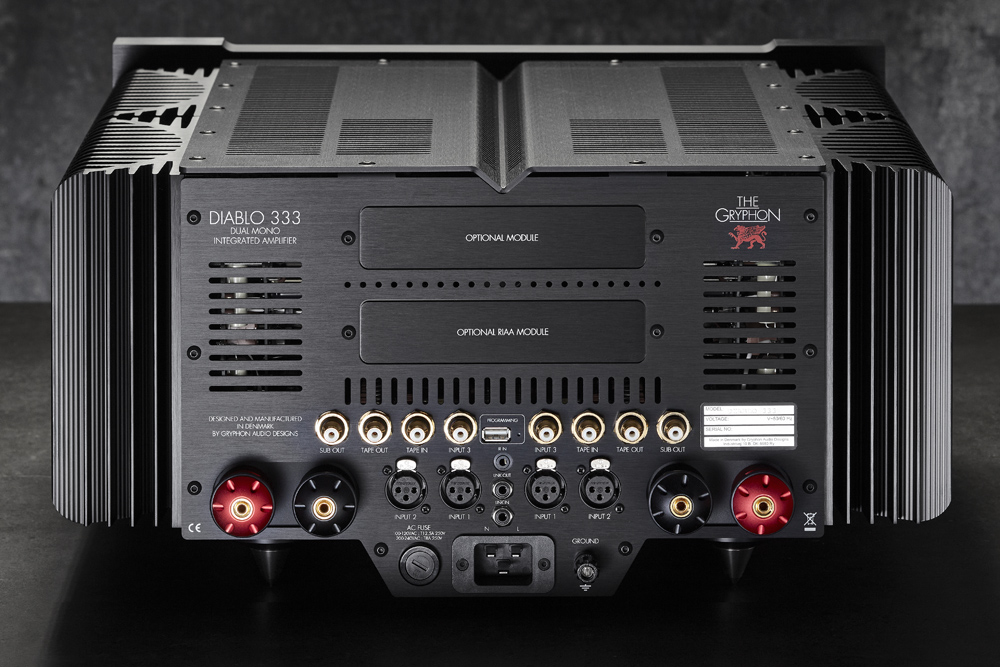
While the review sample was provided in basic integrated amplifier form, the Diablo 333 can be upgraded with up to two plug-in modules for system configuration expansion. The top vacancy accommodates the new optional DAC-3 digital-to-analogue converter module. DAC-3 features a high quality ES9039PRO Sabre DAC chip, USB, AES/EBU, S/PDIF via BNC and Toslink inputs, and seven user-selectable digital filters. Gryphon states, “The 333’s USB input is compatible with all current Digital Audio Formats.”
Below the DAC-3 module, a second receptacle accepts the PS-3 RIAA phono stage card. The PS-3 is a “True Dual Mono Class A-coupled” phono stage featuring no global negative feedback plus discrete balanced circuitry employing matched transistor arrays. Unlike the last-gen PS-2S, the PS-3 features gold-plated Neutrik XLR balanced inputs. In an improvement from the PS-2S which used internal dip-switches, the PS-3 now features external panel switches to set Moving Coil (MC) load impedance. MC and MM (Moving Magnet) selection can be accessed via the menu options on the TFT display.
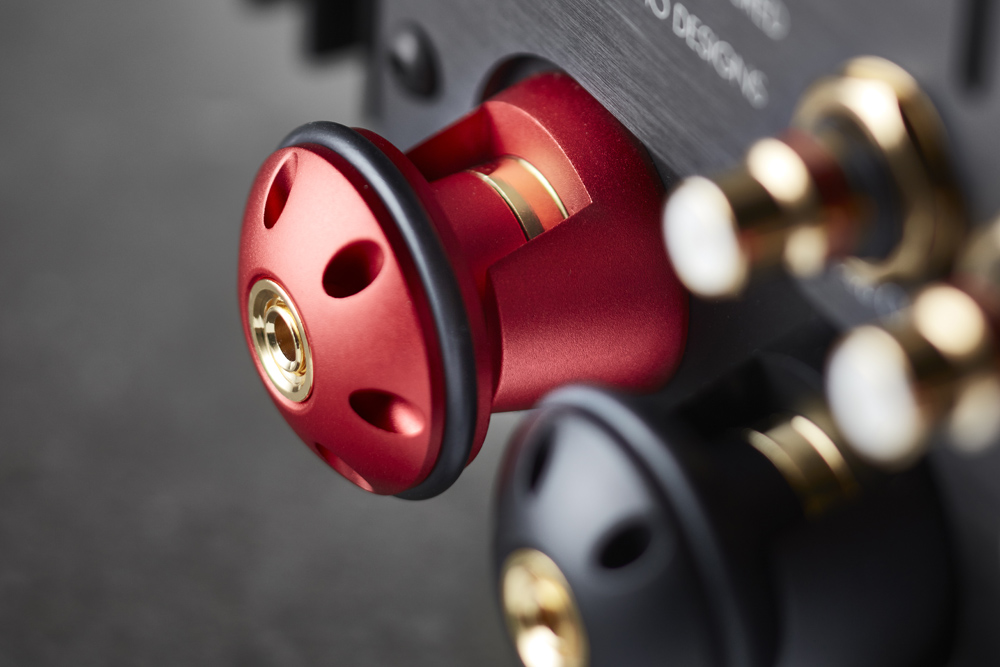
So, a versatile beast, this Diablo 333. In its full metal jacket configuration, all you’ll need is the requisite source, and speakers, of course. No extra converter and phono stage boxes and the obligatory interconnecting cables. Simple.
The Lion – The Devil All the Time
Boy, did I clock some hours on this baby. Almost 12/7. In my near-four-week stint with 333, I had it either softly caressing my eardrums while authoring reviews and going about SoundStage! Australia activities or slamming my skeletal frame with all sorts of big music shenanigans. And everything in between, both analytically and recreationally.
So, ergo the shenanigans scenario, let’s just come right out and state the most immediately obvious traits of this beast. Yes, it’s a beast. A monster of dynamic expression and bass control freak. A true Gryphon, living up to the enviable company reputation, a symbolic mythical creature both graceful and powerful.
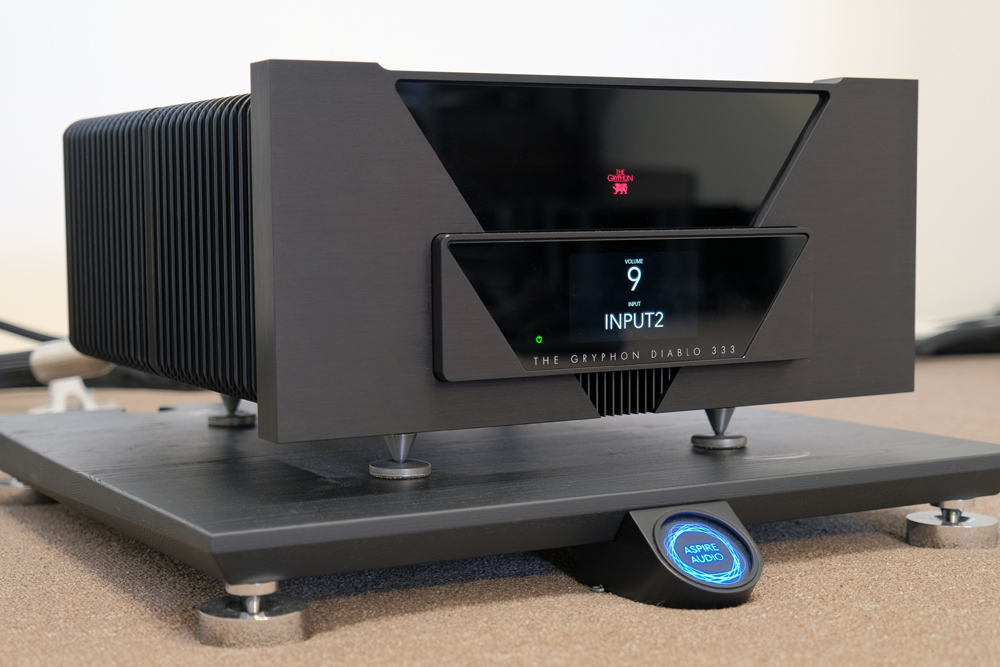
The Diablo 333 is, by quite the margin, the most dynamic and controlled integrated amplifier (and quite possibly amplifier in general) I’ve had in for review. While my own Gryphon Audio Antileon EVO power amplifier digs deeper and with a fuller presentation across the low frequencies, 333 slams harder and slightly tighter. That’s saying something. Man, did Victor Wooten’s Palmystery album slam… “The Lesson” played with such a defined and sharp attack, such realism, that Wooten’s instrument may as well have been directly plugged into the 333.
Same for Ninad Vasilić from any of his well-produced albums. There were textures and micro-details in his playing which the Diablo 333 revealed effortlessly. When the virtuoso knocks on his instrument’s body, the hollowness and timbre of the wood came across convincingly real and dynamically expressive.
Want to flip your wig – or part your hair – with a music assault? Well, pump up the volume with Mino Cinelu’s self-titled album on the tracks “Moun Madinina” and “Namonale”, or even the electronica-like “Why Not?”. When the drum whacks strike a few minutes into each song, 333 can impact in a way which will test your speakers’ mettle. You’re served a thumping gut hit with ample detail, true instrument tonality, and sharp leading edge attack. That last trait also served to enhance the sense of the music’s pace and rhythmic flow which, when fused with the exceptionally dynamic jump factor, made for a dramatic and exciting experience.
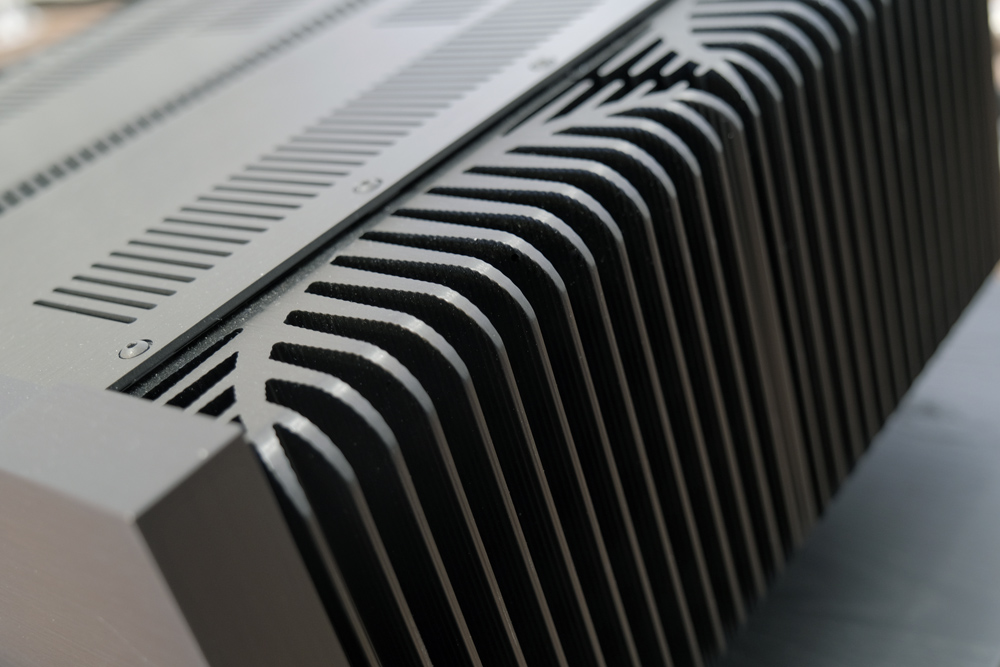
Don’t even relax your attention on the volume level position for one second when listening to Copland’s “Fanfare for the Common Man” on Reference Recordings. Watch those woofers. Tied to my Wilson Audio Alexia V, the 333 provided an undeniable lesson in dynamic contrast and low frequency impact.
The Eagle – The Lithe Glider
OK, it’s pretty obvious from my prose above that Diablo 333 can smash the full energy of music’s oscillating vigour while also slamming the bass with power and tunefulness. Yet, the 333 integrated is fleet-of-foot (and wing), refined and smooth while also being superbly detailed.
Take the subtle beauty of Tsuyoshi Yamamato Trio’s title track on Blues For K where the interplay between piano, acoustic bass, and drums was so expertly resolved. Each instrument inhabited its own individualised space within the soundstage. Especially enjoyable was the piano, which sounded majestic while being so true of tone. The amplifier’s speed of attack and its tremendous detail resolution made music, in fact all the music I auditioned while in my studio, sound exquisitely lifelike.
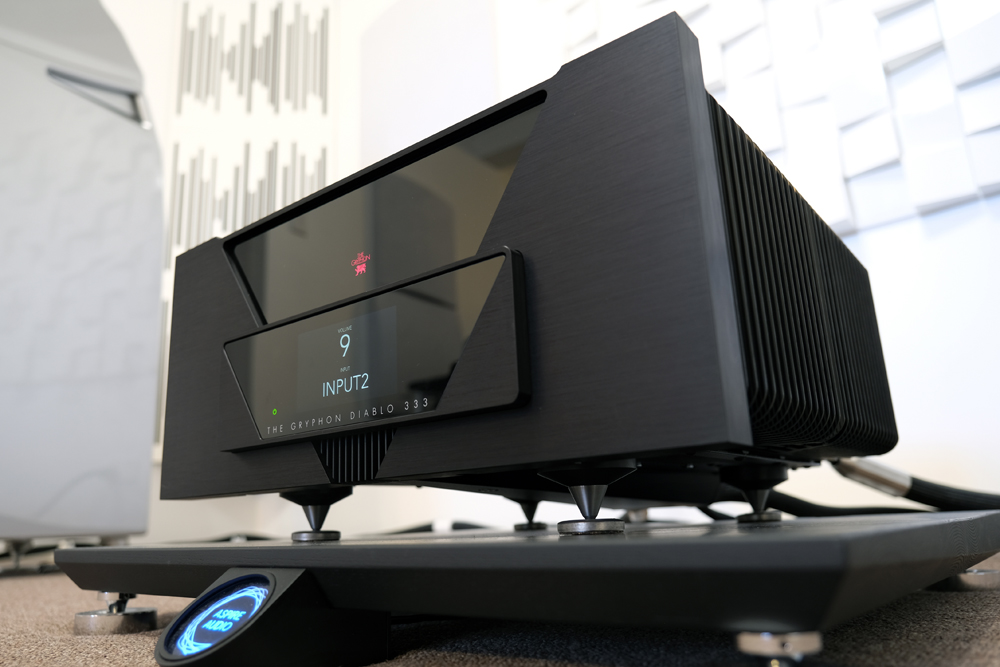
Spatially, the Diablo 333 threw a big, generous soundstage (if not quite to the size of the truly ginormous Antileon EVO’s) with pinpoint image placement. It’s a tad more forward sounding than the subtly laidback Antileon EVO, something that brings an incisive sense of immediacy across all music genres. Spacious live recordings carried all the hallmarks of Gryphon Audio amplification. That is, an open sound across the bandwidth without a hint of solid state-like congestion while presenting a soundfield which is wide, tall, and deep, as I wrote above.
The Diablo 333’s clarity extended lavish micro-detail without giving up smoothness. I got excellent insights into string picking, as offered by Jeff Kollman’s techniques in the wonderful “Self Reflection” and “Two Years Ago Today” from his 2023 A.D. album. The harmonics and plectrum/finger slides on Kollman’s steel stringed guitar were untangled naturally, in other words, without artificial exaggeration while adding to the musical enjoyment, rather than being a showy distraction.
The Gryphon
Big orchestral works and heavy rock sounds projected… large. Or I should actually write: LARGE. With the former, orchestras were spread wide and deep in realistically communicated hall acoustics and ambience. On the latter, the power, speed and attack of bands like Tool, Sasquatch, Glasgow Coma Scale, 1000mods, and many others made for a visceral, edge-of-your-seat listen. Just as good rock and heavy music should be – exciting, primeval, innately tense and simultaneously thrilling. Yeah, mythically animalistic.
Conclusion
There has been a string of high quality integrated amplifiers, released of late by numerous and varied brands, which challenge, and could potentially even usurp, the preamp/power amp throne. Within that space, there’s a handful of top-of-the-heap participants and Gryphon Audio’s Diablo 333 is undoubtedly one of the top contenders. It’s superbly engineered, immaculately built, attractively styled, and can be feature-full when populated with the optional digital-to-analogue converter and phono stage modules.
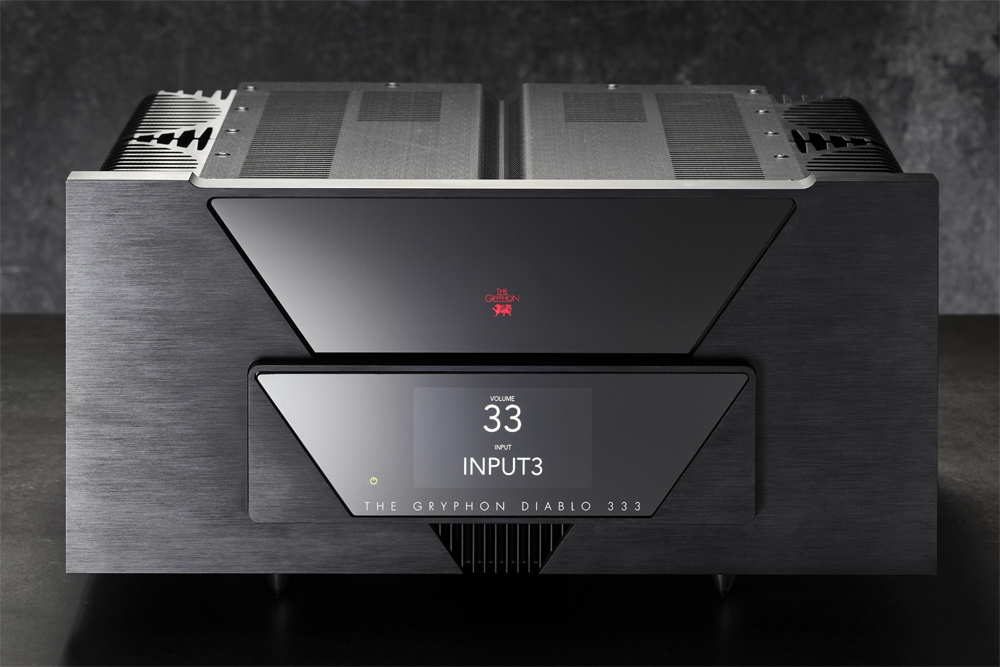
Well-endowed it may be, but that would be just well-intentioned design if the Diablo 333 could not deliver performance commensurate with its station, considering the elevated echelon.
That being said, this sizable integrated delivers in spades… nay, make that excavator loads. Diablo 333 offers powerful dynamics, firm bass grip, authentic tone, exacting resolution, and so, so much more.
Yes, it’s an investment, but Gryphon Audio’s Diablo 333 powerfully reflects the insignia the company so proudly celebrates and displays across all its products. Diablo 333 soars high as the overlord of the skies. It truly is one of the very best amplification products, be integrated or not, that money can buy.
… Edgar Kramer
This email address is being protected from spambots. You need JavaScript enabled to view it.
Associated Equipment
- Speakers — Wilson Audio Alexia V, Axis Loudspeakers VoiceBox S (nearfield monitor), Vermouth Audio Little Luccas Mk.II, Atacama stands
- Amplifier — Gryphon Audio Antileon EVO
- Preamplifier — Supratek Cortese, Totaldac d1-triunity (periodically, direct to amplifier)
- Sources — Digital: 432 EVO Aeon Mk.3 Reference Music Server/Roon Core, Yamaha CD-S2100 transport, Totaldac d1-triunity DAC. Analogue: Transrotor Crescendo with Konstant Studio controller, Reed 1X Tonearm with upgraded internal wiring, Shelter Harmony cartridge, The Funk Firm Houdini cartridge decoupler, Supratek Cortese & REDGUM Audio RGPH2 phono stages
- Processor — DEQX PreMate (part of arsenal/casual use)
- Cables — VYDA Laboratories Orion Silver Reference HFC IC and speaker cables, PSC Audio custom design XLR, Vermouth Audio Reference loom,Tubulus Concentus USB
- Audio Rack — SGR Audio Statement Model V, Aspire Audio Belgravia amplifier platform (customised for Gryphon Audio Antileon EVO), Stereotech Aluminar Dark 3-tier rack
- Acoustic Treatment — Vicoustic Multifuser Wood, Wavewood Ultra, Cinema Round Premium and Super Bass Extreme
- Miscellaneous — Silent Angel Bonn N8 Pro network switch, GigaWatt PF-1 EVO power strip, Les Davis Audio Viscoelastic CLD discs, Voodoo Cable Iso-Pods, Bocchino Audio Mecado, VRC Vinyl Record Cleaning system plus miscellaneous accessories
Gryphon Audio Designs Diablo 333 Integrated Amplifier
Price: AU$34,995
Australian Warranty: Five Years
Australian Distributor: Kedcorp
PH: +61 2 9561 0799
www.kedcorp.com.au
Gryphon Audio Designs
Industrivej 10B
8680 Ry
Denmark
+45 86 89 12 84
www.gryphon-audio.com

